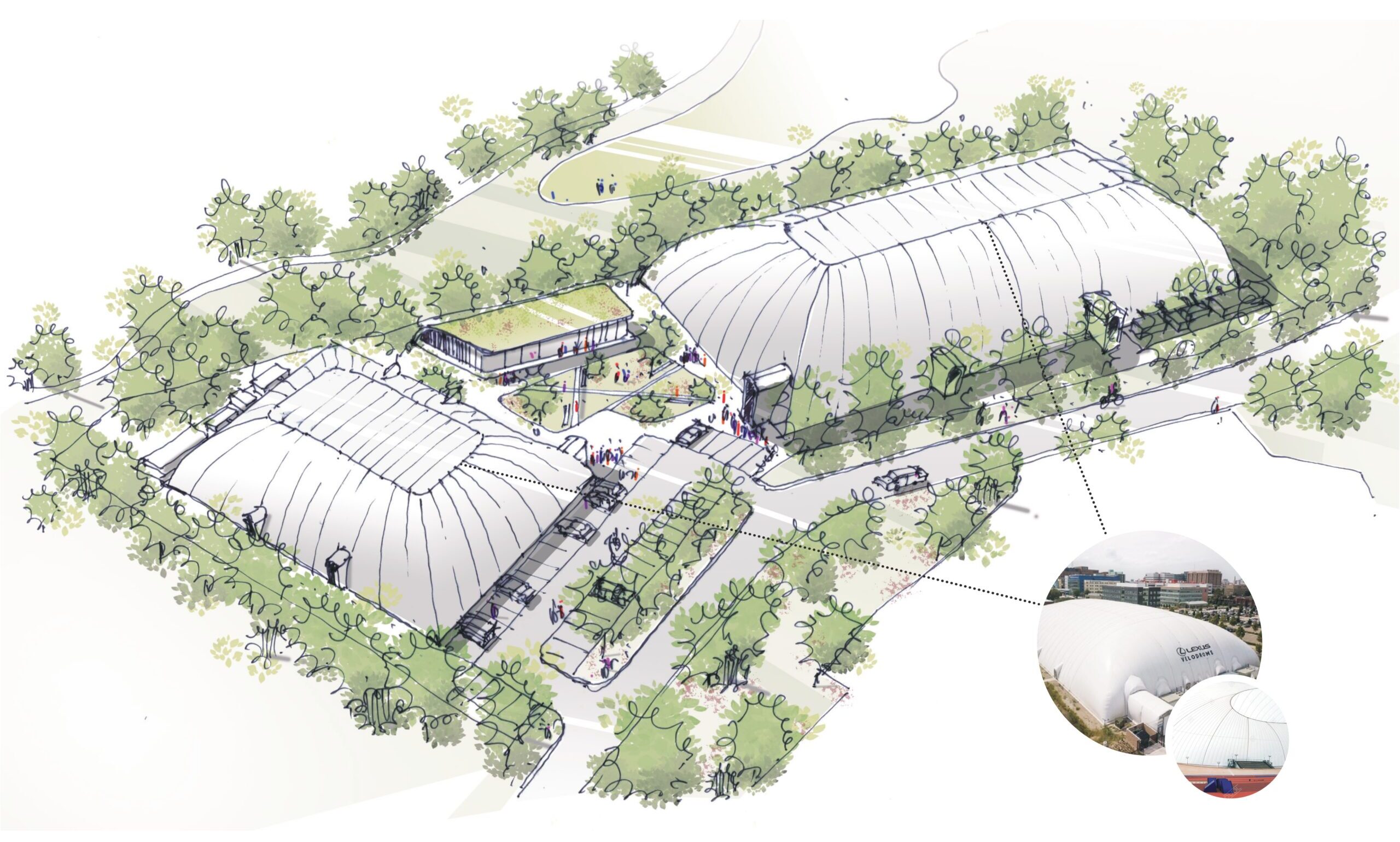White Paper: Climate-Controlled Domes in the Australian Landscape
Executive Summary
Australia’s harsh and highly variable climate poses unique challenges for the consistent and year-round operation of sporting, recreational, agricultural, and event facilities. Climate-controlled domes—enclosed, air-supported or tension-fabric structures—offer a versatile, energy-efficient, and scalable solution to these challenges. This paper explores the urgent need for such domes in Australia, backed by climatic data, infrastructure gaps, and case studies, and outlines the potential return on investment in both urban and regional contexts.
- Introduction
Climate-controlled domes (CCDs) are increasingly being used worldwide for their flexibility, sustainability, and cost-efficiency. In Australia, however, adoption remains limited despite growing demand for all-weather facilities.
Definition:
A climate-controlled dome is a large, enclosed space that maintains a stable internal environment, often through HVAC systems, and can be used for sports, agriculture, events, or storage.
- The Australian Climate Context
2.1 Extreme Heat and UV Exposure
- Australia is the driest inhabited continent, with more than 70% of its landmass classified as arid or semi-arid (Geoscience Australia, 2021).
- Extreme heat days (above 35°C) are becoming more frequent. For example:
- Western Sydney recorded 52 days over 35°C in 2023 (Bureau of Meteorology).
- Melbourne saw its longest heatwave in over a century in 2024.
- UV Index: Australia experiences some of the world’s highest UV levels, increasing risk of skin cancer and discouraging outdoor activity (Cancer Council Australia, 2023).
2.2 Rain and Flooding
- The La Niña and El Niño climate cycles cause unpredictable swings between droughts and flooding.
- In 2022–23, Queensland and NSW floods disrupted over 1,000 sporting facilities, schools, and agricultural sites (NSW DPIE, 2023).
2.3 Cold and Wind in Southern States
- In Victoria and Tasmania, outdoor sport is often unplayable during winter due to cold, wind, and rain, limiting seasonal participation and facility ROI.
- Infrastructure and Participation Gaps
3.1 Sporting Infrastructure Shortfalls
- Sport Australia estimates a $1.1 billion annual shortfall in community sport infrastructure (Sport 2030 Report).
- Outdoor sports like tennis, netball, soccer, cricket, and squash face high cancellation rates due to weather.
- Dome-covered multi-sport facilities can increase usage from 30–40% to over 80–90% year-round (Sports Facility Reports, Canada 2021).
3.2 School and Community Impact
- Over 10,000 schools in Australia lack enclosed sports facilities.
- Domes can convert under-utilised spaces (e.g., netball courts) into all-weather training and wellness zones.
- Climate-Controlled Domes: Use Cases and Benefits
4.1 Sport and Recreation
- Allows all-weather training, increasing revenue and development pathways.
- Prevents scheduling conflicts and injury risk due to heat or slippery surfaces.
Case Study: Upstate NY Dome (USA)
- Installed winter-only dome over tennis courts.
- Result: 100% facility usage during winter, 3x increase in junior and adult programs, and ROI within 18 months.
4.2 Agriculture
- Year-round protection from sun, pests, and rain.
- Enables urban farming, hydroponics, and climate-resilient food production.
- Domes reduce water use by up to 90% vs open-field farming (FAO 2022).
4.3 Events and Emergency Response
- Rapid-deploy domes are used for fire recovery shelters, community engagement hubs, and vaccination centres.
- Domes can be erected in under 48 hours and serve 500–2,000 people in emergencies.
- Economic and Environmental Analysis
5.1 Cost-Effectiveness
| Item | Dome Facility | Brick-and-Mortar Equivalent |
|---|---|---|
|
Initial Cost (AUD) |
$500K – $3M |
$3M – $12M |
|
Build Time |
2–6 months |
12–36 months |
|
Annual Maintenance |
Low |
Moderate to High |
|
Expandable/Relocatable |
Yes |
No |
5.2 Sustainability
- Energy-efficient HVAC options are available.
- Compatible with solar energy and rainwater harvesting.
- Life cycle of up to 25+ years with proper maintenance.
- Market Opportunity in Australia
- High demand in urban growth corridors like Western Sydney, Gold Coast, and Greater Geelong.
- Ideal for PPP models (Public-Private Partnerships) and local government innovation grants.
- Opportunity to retrofit aging facilities or revitalize underused spaces (e.g., squash, tennis, netball courts).
- Recommendations
- Government Incentives: Support dome projects through sport grants, community health, and climate adaptation funds.
- Pilot Programs: Establish demonstration domes in three diverse climate zones (e.g., Cairns, Melbourne, Alice Springs).
- Multi-Purpose Design: Combine sport, health, education, and community use to maximise ROI.
- Data Collection: Encourage post-installation studies on energy use, participation, and local economic impact.
- Conclusion
Climate-controlled domes offer an adaptable and scalable solution to Australia’s weather extremes, infrastructure shortfalls, and growing demand for sustainable, multi-purpose spaces. Their ability to future-proof communities and support participation across age groups and demographics makes them a high-impact investment for both public and private sectors.
References
- Bureau of Meteorology (2023). Annual Climate Summary: Australia.
- Sport Australia (2018). Sport 2030: National Sport Plan.
- Geoscience Australia (2021). Climate of Australia.
- Cancer Council Australia (2023). UV and Sun Safety Statistics.
- NSW Department of Planning, Industry and Environment (2023). Flood Recovery Infrastructure Audit.
- FAO (2022). Protected Agriculture and Hydroponics: Climate Adaptation Strategies.
- Tennis Canada (2021). Indoor Facility Performance Reports.
- Dome Technology (2022). Case Studies in Climate-Controlled Structures.
- International Association for Sports and Leisure Facilities (2020). Trends in Enclosed Sports Structures.



